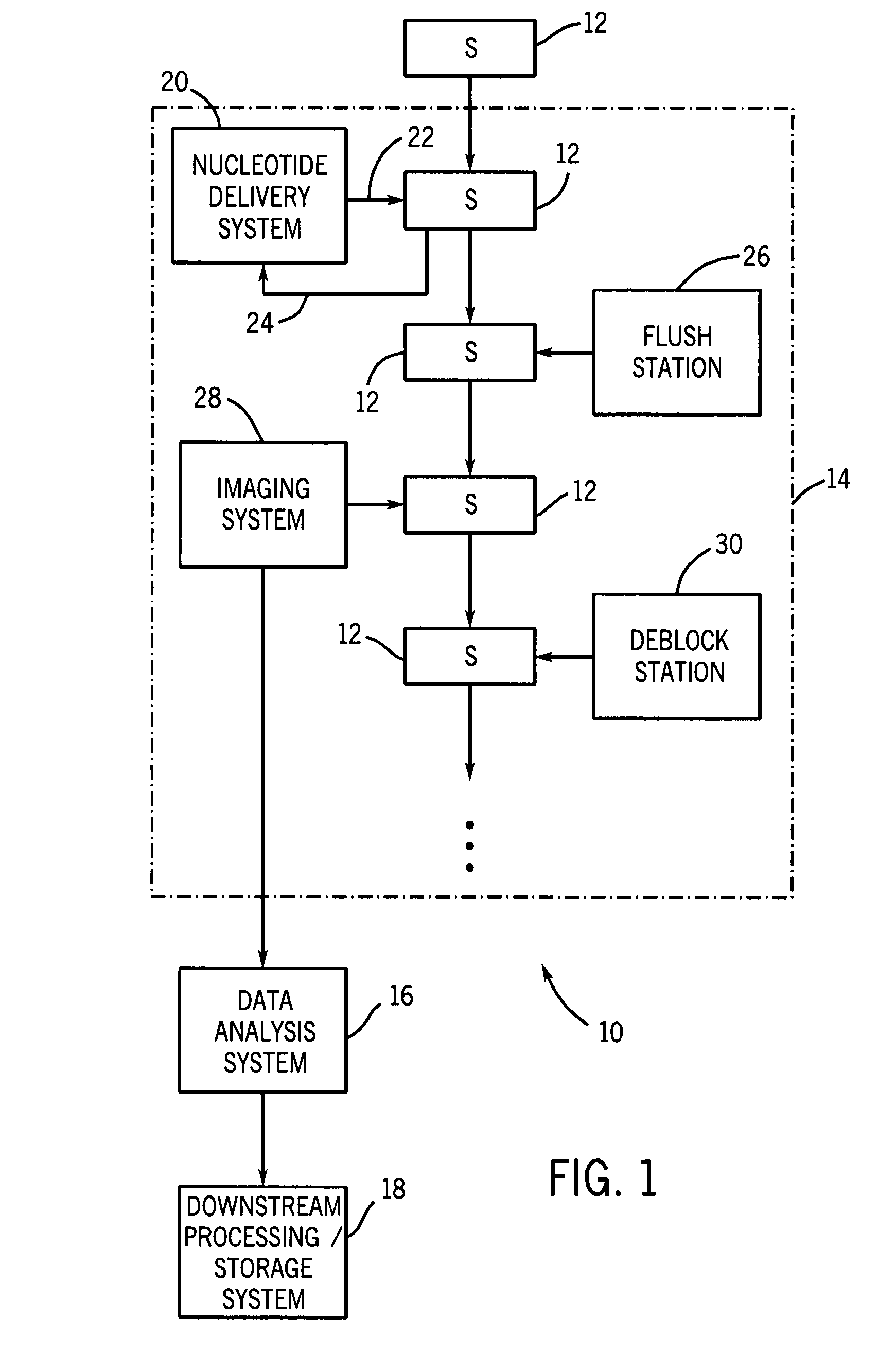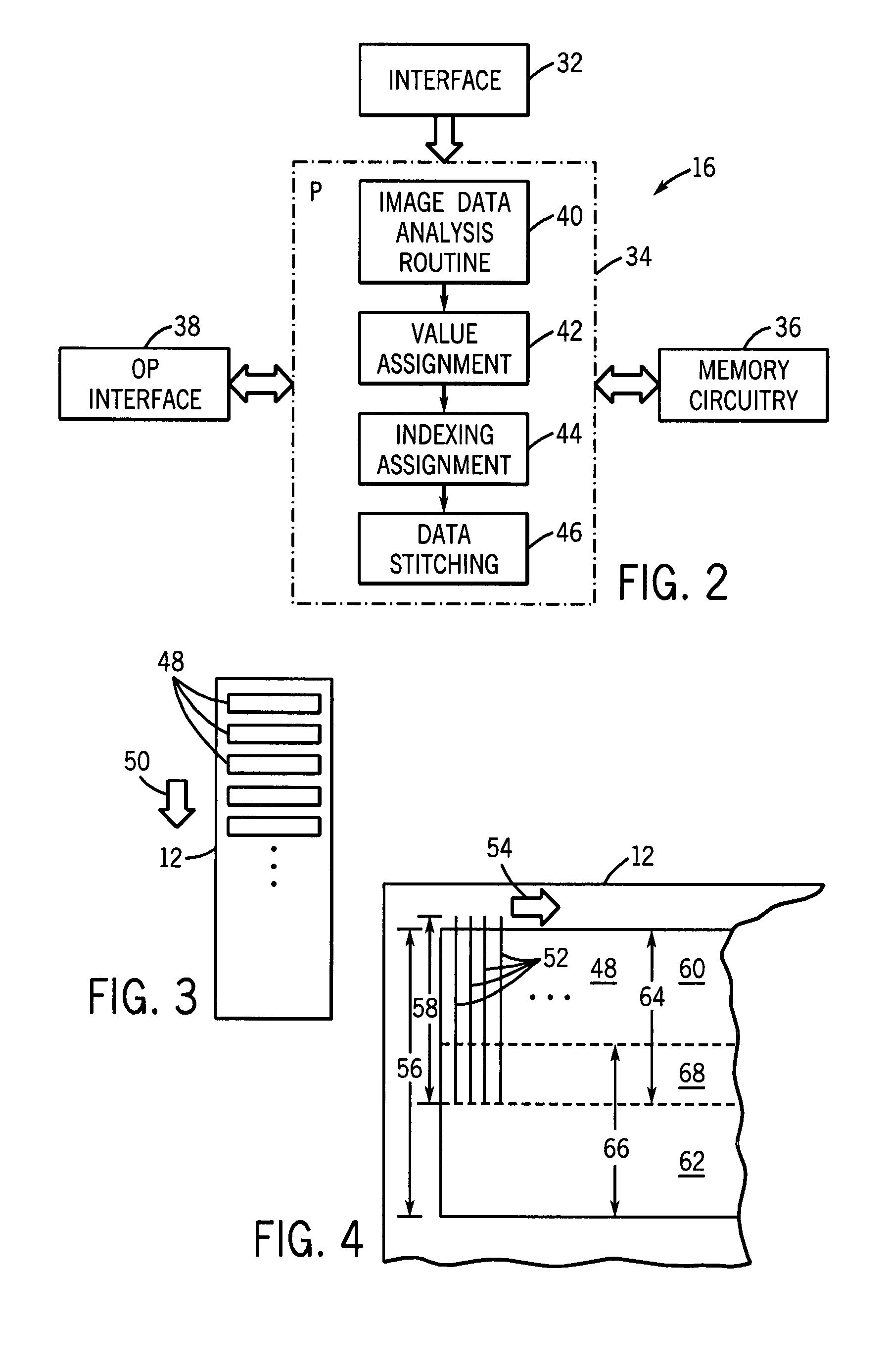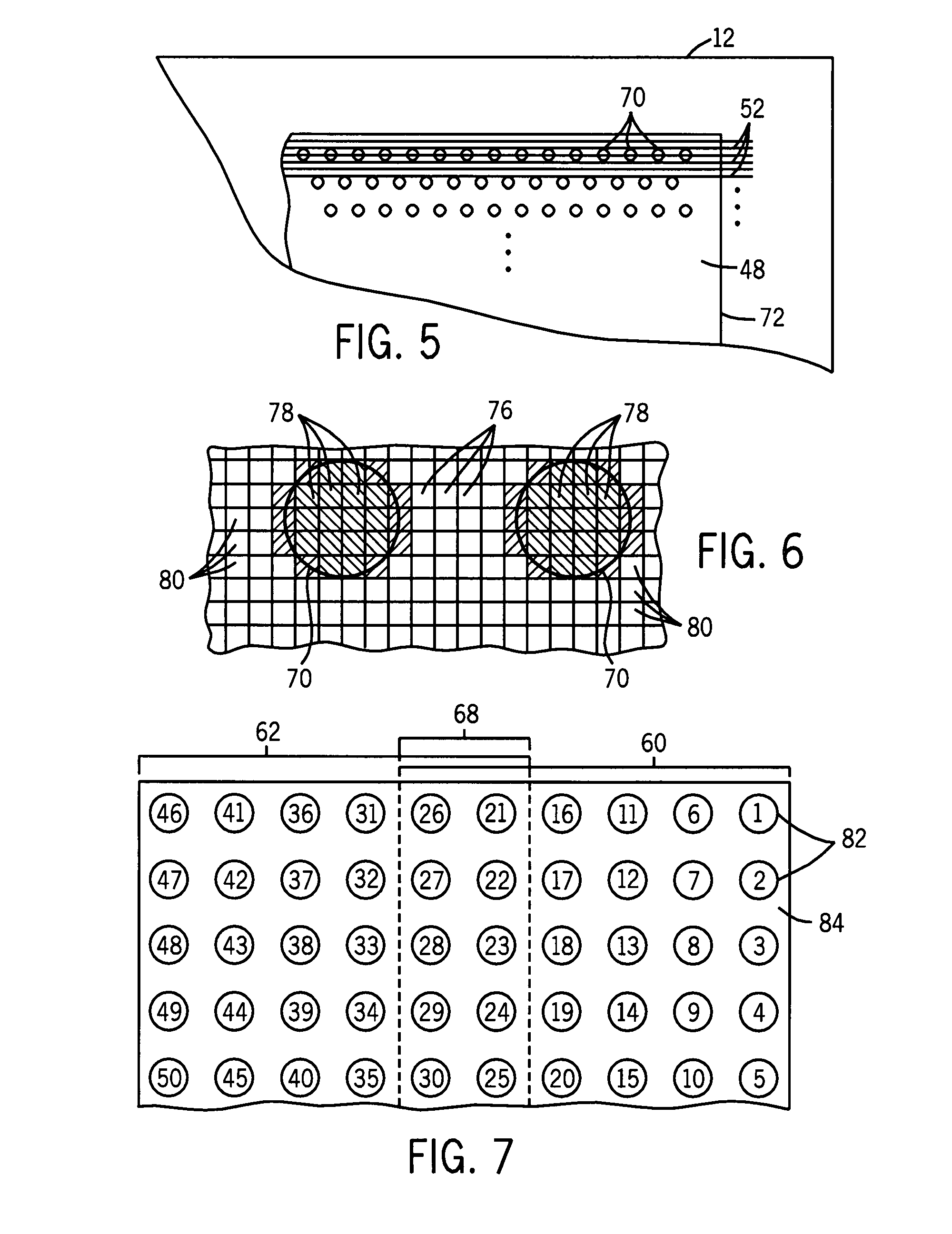Microarray analytical data stitching system and method
a microarray and data technology, applied in the field of microarray analytical data stitching system and method, can solve the problems of large pre-defined area of microarray area or site grid that cannot be scanned in a single pass by the scanning system, affecting the accuracy of microarray analysis, and requiring extensive memory and computational capacity. , to achieve the effect of reducing the amount of computer memory required and increasing efficiency
- Summary
- Abstract
- Description
- Claims
- Application Information
AI Technical Summary
Benefits of technology
Problems solved by technology
Method used
Image
Examples
Embodiment Construction
[0023]Turning now to the drawings, and referring first to FIG. 1, an exemplary analysis system 10 is illustrated for processing biological microarrays, imaging the microarrays, and analysis of data based upon the images. In the illustrated embodiment, the system is designed to introduce molecules, such as nucleotides, oligonucleotides, and other bioactive reagents into samples 12 that may be prepared in advance. The system may be designed for synthesizing biopolymers, such as DNA chains, or sequencing biopolymers. However, it should be borne in mind that the present technique is not limited in any way to sequencing operations, gene expression operations, diagnostic applications, diagnostic applications, or any one of these, but may be used in any of them for analyzing collected image data for multiple swaths or passes over a region of a sample as described below. Other substrates containing arrays of molecules or other detectable features can similarly be used in the techniques and ...
PUM
 Login to View More
Login to View More Abstract
Description
Claims
Application Information
 Login to View More
Login to View More - R&D
- Intellectual Property
- Life Sciences
- Materials
- Tech Scout
- Unparalleled Data Quality
- Higher Quality Content
- 60% Fewer Hallucinations
Browse by: Latest US Patents, China's latest patents, Technical Efficacy Thesaurus, Application Domain, Technology Topic, Popular Technical Reports.
© 2025 PatSnap. All rights reserved.Legal|Privacy policy|Modern Slavery Act Transparency Statement|Sitemap|About US| Contact US: help@patsnap.com



